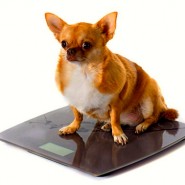
What is obesity?
Obesity is the term given to being overweight, or having an increased proportion of body fat. In dogs, obesity tends to occur when the calories in the diet exceed the energy expenditure; this excess energy is then converted into fat.
Obesity in dogs is on the rise, with 35 per cent of dogs in the UK estimated to be overweight. Being a bit on the podgy side is the least of an overweight dog’s worries; as in humans, obesity and fat can cause dogs many serious health issues. We have all the information you need on canine obesity, how to tackle it, and how to keep your dog’s weight in check.
Causes of obesity in dogs
Overindulging and lack of exercise can result in dogs becoming obese. Many dogs become overweight due to their owners unwittingly overfeeding them; dogs can’t self-regulate their food intake and will generally eat whatever is put in front of them. Some health issues may also cause a dog to put on weight. These include hypothyroidism (an under-active thyroid gland), which reduces a dog’s metabolic rate, causing him to become lethargic.
Musculoskeletal conditions, such as arthritis or ligament strain, and heart and respiratory disease, can also cause problems, since they reduce a dog’s ability to exercise, while Cushing’s disease, a hormonal disorder, causes the body to overproduce natural steroids which stimulate the appetite.
Similarly, steroid medication can cause an increased appetite as well. Some health conditions may make dogs appear overweight when they’re not, such as fluid retention, pregnancy, and abdominal tumours. If your dog’s tummy looks like it’s getting bigger or appears swollen, it’s worth taking him to your vet to rule out any underlying health issues.
Health risks of having an overweight dog
If your dog is carrying excess weight it will put extra strain on various parts of his body. A number of health issues could arise as a result:
Musculoskeletal problems such as arthritis, ligament strain, and slipped discs.
Heart and respiratory diseases.
Skin disease — obese dogs may develop skin folds that restrict airflow to some areas resulting in them becoming moist and prone to infection. Blood flow to skin may also be reduced due to cardiac or respiratory deficiency.
Liver insufficiency.
Diabetes
A dogs ideal body shape
When looking at your dog from above, there should be a slight narrowing between the end of his ribcage and his hips, giving him a noticeable waist.
Looking at your dog’s profile, the line of his undercarriage should curve from the end of the ribs towards the groin. This is more pronounced in deep-chested breeds such as the Greyhound and Whippet.
When stroking your hands along the side of your dog’s body you should be able to feel each rib easily, although they shouldn’t be visually prominent. Check your dog’s weight on a weekly basis and weigh him regularly — your vet can do this at a monthly health check.
Keeping the weight off your dog
Following the launch of the latest PDSA Animal Wellbeing (PAW) Report, the charity has given some top tips for healthy weight loss…
Prevention: Preventing obesity is much easier than getting a dog to lose weight. A good diet in puppyhood is essential — fat puppies are more likely to become fat adult dogs due to the number of fat cells they produce while growing.
Take action: If your dog is overweight, don’t be afraid to seek advice from your vet on how tackle the problem effectively.
Cut out treats: Even a small treat can significantly increase your dog’s daily calorie intake.
Balanced diet: Successful weight loss requires a combination of the right diet and the right amount of exercise.
Regular exercise: Activity levels must be built up gradually. Encouraging play and games is a great way to increase your dog’s activity levels. Remember that every dog is different; ask your vet about how much exercise your dog needs
Seek veterinary advice: Rapid weight loss can be dangerous. Always speak to your vet before making any major changes to your dog’s diet or exercise regime to ensure that weight loss is gradual and safe.
Dieting tips for an overweight dog
For a dog to lose weight, his calorie intake needs to be cut by up to 60 per cent. Here are some tips on how you can stop your dog being fat.
Speak to your vet about the amount of food your dog should be eating on a daily basis. Use scales to weigh out his daily food allowance every morning.
If you like to give your dog naughty titbits, offer him portions of his daily food allowance or raw/boiled vegetables as treats instead.
Make sure that everyone who comes into contact with your dog knows the rules — there’s no point putting him on a strict diet if he can get a sneaky bit of sausage elsewhere!
Divide his daily food allowance in to several small meals to offer throughout the day so he doesn’t feel hard done by.
If your dog is on a wet food diet, bulk it up with vegetables rather than mixer biscuits, which have extra roughage and less calories.
Avoid leaving food lying around within your dog’s reach, and secure waste bins.